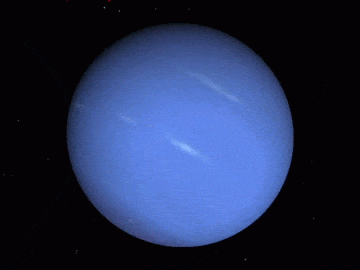Our Solar System
The solar system is a term that is used to describe the eight planets and their surrounding moons (as well as meteoroids, comets and asteriods) which orbit the sun. The term solar system derives from the latin word 'solis' which translates to sun and consists of 8 planets which are Mercury, Venus, Earth, Mars, Jupiter, Saturn, Uranus and Neptune. Taking on average 230 million years "to complete one orbit around the galactic center" [1], being 4.6 billion years old and orbiting "the center of the Milky Way at about 515,000 mph (828,000) kph" [1], the solar system is just one of billions of galaxies which exist within the universe. See video below to gain a better understanding of our solar system.
Being a spiral galaxy, the Milky Way contains four spiral arms; Sagittarius, Scutum-crux, Norma and Cygnus and Perseus. Our solar system is "located in a region in between the two arms called Orion-Cygnus arm. This arm measures 3,500 light-years across and is 10,000 light years in length, where it breaks off from the Sagittarius arm." [3] You can see this in the picture below [4]
 |
| [4] The Solar System in the Milky Way |
In addition to this, the Solar System contains other important structures including the Asteroid belt, the Oort Cloud and the Kuiper Belt. The asteroid belt, mostly consisting of rock and stones orbits between the planets Mars and Jupiter and "serves as as sort of dividing line between the inner rocky planets outer gas giants" [5]. It has been said that the Asteroid belt once had a much bigger population of material which was overtime gravitated by Jupiter's pull and has now since been said to have lost "99 percent of its former material to other parts of the solar system and beyond" [5]. The Oort Cloud, discovered by dutch astronomer Jan Oort in 1950 is the furthest away region of the solar system and "is like a big, thick-walled bubble made of icy pieces of space debris the size of mountains and sometimes larger" [6]. The sun, the host star and center of our solar system is approximately 2000-5000 Astronomical Units (AU) away from the Oort Cloud which illustrates how far away this region is where AU is the distance between the earth and sun. Lastly, the Kuiper Belt, "a donut-shaped region of icy bodies beyond the orbit of Neptune" [7] consists of millions of objects made of ice and although similar to the Oort Cloud in terms of being the source of comets, the belt is much closer to our host star with a distance of 50 AU, compared to 30 AU from Neptune the furthest away planet to the sun.
References
[1] Barnett, A. [2019]. Overview. [Online] Available at: https://solarsystem.nasa.gov/solar-system/our-solar-system/overview/ [Last Accessed 07/10/2020].
[2] National Geographic. [2017]. Solar System 101. [Online] Available at: https://www.youtube.com/watch?v=libKVRa01L8&t=43s [Last Accessed 07/10/2020].
[3] Williams, M. [2016]. Where is Earth in the Milky Way?. [Online] Available at: https://www.universetoday.com/65601/where-is-earth-in-the-milky-way/#:~:text=The%20Solar%20System%20is%20located,off%20from%20the%20Sagittarius%20Arm. [Last Accessed 07/10/2020].
[4] pbs.org. [2000]. Zoom-Out Map of the Local Universe. [Online] Available at: https://www.pbs.org/wgbh/nova/universe/tour_map03.html [Last Accessed 07/10/2020].
[5] Yirka, B. (2017). New theory on origin of the asteroid belt. (Online) Available at: https://phys.org/news/2017-09-theory-asteroid-belt.html (Last Accessed 07/10/2020)
[6] solarsystem.nasa.gov. Oort Cloud. (Online) Available at: https://solarsystem.nasa.gov/solar-system/oort-cloud/overview/ (Last Accessed 07/10/2020)
[7] solarsystem.nasa.gov. Kuiper Belt. (Online) Available at: https://solarsystem.nasa.gov/solar-system/kuiper-belt/overview/ (Last Accessed 07/10/2020)


Really interesting stuff, space is always fascinating. :)
ReplyDeleteReally informative and intresting blog. This blog is really clear and the moving images are captivating.
ReplyDelete